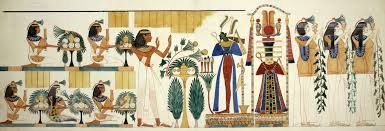Ancient Artz: The Creative Story of Early People
From the first drawings on cave walls to the huge temples of old empires, humans have always made art. This early art, called Ancient Artz, is more than just old objects. It is a way to see what people in the past believed, valued, and created.
Ancient Artz covers many years and many cultures. It shows how people tried to explain the world, honor their gods, share stories, and leave something behind.
Where Ancient Artz Began
Prehistoric Times
Long before cities or writing, people were already making art.
-
Cave paintings – like those in Lascaux and Chauvet, showing animals such as bison and horses
-
Rock carvings – also called petroglyphs
-
Small statues – like the Venus of Willendorf, showing ideas of fertility
-
Materials used – ochre, charcoal, bones, and stone
This art was not just decoration. It was part of life, ritual, and identity.

Civilizations and Their Art
Different cultures made different kinds of art. Each had its own style and purpose.
| Civilization | Main Contributions | Famous Examples |
|---|---|---|
| Mesopotamia | Ziggurats, carved reliefs, cylinder seals | Ziggurat of Ur, Hammurabi’s Code Stele |
| Egypt | Pyramids, tomb paintings, statues, writing | Pyramids of Giza, Mask of Tutankhamun |
| Greece | Sculptures, pottery, temples | Parthenon, Discobolus, Greek vases |
| Rome | Arches, aqueducts, mosaics, frescoes | Colosseum, Pompeii frescoes |
| Indus Valley | Seals, terracotta figures, city design | Dancing Girl statue, animal seals |
| Mesoamerica | Temples, masks, textiles | Chichen Itza, Aztec Sun Stone, Inca cloth |
| China | Bronze, jade carvings, calligraphy | Shang bronzes, jade discs |
Why Ancient Artz Was Made
Ancient art was useful in many ways:
-
Religion and Belief
-
Tomb paintings in Egypt were made to help souls in the afterlife.
-
Mayan temples matched with the stars and sky.
-
-
Power and Leadership
-
Mesopotamian carvings showed kings and their victories.
-
Roman arches celebrated military wins.
-
-
Daily Life
-
Greek pottery showed people eating, working, or playing sports.
-
Roman wall paintings showed family life.
-
-
Symbols and Stories
-
Fertility figures, sun designs, and animals often had special meanings.
-
Read also: Abstract Artwork For Emotional Appeal
Types of Ancient Artz
People used many forms of art to express themselves.
Main Forms
-
Sculpture – Large statues and small figures
-
Architecture – Pyramids, temples, palaces, city layouts
-
Pottery – Useful objects painted with designs
-
Jewelry – Made of gold, jade, or stones
-
Wall Paintings – Myths and daily life scenes
-
Textiles – Cloth with rich colors and patterns
Media and Uses
| Medium | Common Use | Example Culture |
|---|---|---|
| Sculpture | Worship, memory of leaders | Greece, Egypt |
| Architecture | Worship, power, community | Mesopotamia, Rome |
| Pottery | Everyday use + stories | Greece, Indus |
| Jewelry | Wealth, spiritual protection | Egypt, China |
| Paintings | Decoration, myths | Rome, Minoans |
| Textiles | Trade, ritual, identity | Inca, China |
Saving Ancient Artz
Even after thousands of years, much of Ancient Artz survives because of careful work.
How It Is Saved
-
Archaeology – Digging and studying old sites
-
Museums and UNESCO – Places like the British Museum or UNESCO sites protect treasures
-
Restoration – Cleaning and repairing damaged art
-
Digital Technology – 3D scans, VR tours, and online archives help more people see ancient art
Famous UNESCO Sites:
-
Pyramids of Giza (Egypt)
-
Machu Picchu (Peru)
-
Petra (Jordan)
-
Lascaux Caves (France)
Influence on Later Art
Ancient Artz shaped the future in many ways:
-
Renaissance Art – Inspired by Greek and Roman ideas of balance and beauty
-
Modern Buildings – Many government buildings use columns and domes from classical times
-
Design and Fashion – Egyptian, Chinese, and Mayan patterns still appear in jewelry and clothing
-
Digital Art – Today’s artists use ancient symbols in games, films, and online creations
Conclusion
Ancient Artz is more than just old objects in museums. It tells us who our ancestors were, what they believed, and how they lived. From simple carvings to great temples, these works are a bridge between past and present.
Studying and protecting Ancient Artz helps us understand that creativity is part of being human. No matter the time or place, people have always found ways to tell stories, honor beliefs, and leave their mark on the world.


